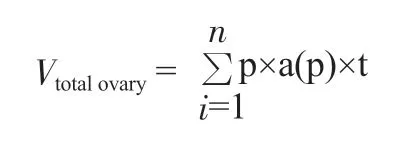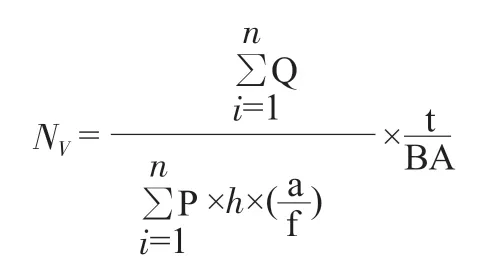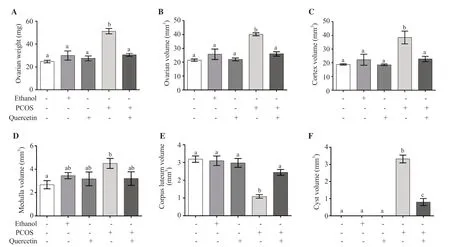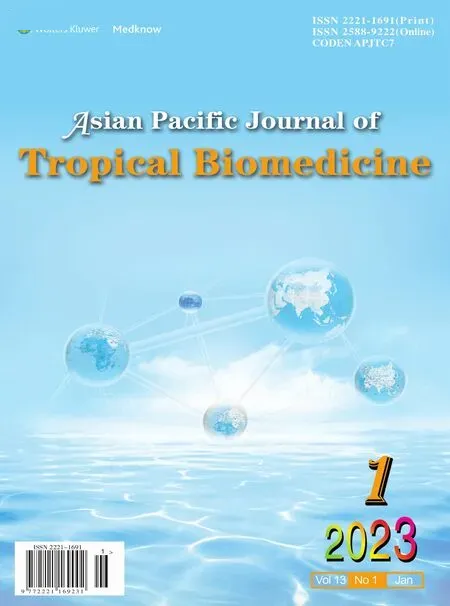Quercetin modulates ovarian autophagy-related molecules and stereological parameters in a rat model of PCOS
Asma Neisy, Farhad Koohpeyma, Majid Jafari Khorchani, Fatemeh Karimi, Fatemeh Zal✉
1Department of Biochemistry, School of Medicine, Shiraz University of Medical Sciences, Shiraz, Iran
2Physiology, Endocrine and Metabolism Research Center, Shiraz University of Medical Science, Shiraz, Iran
3Department of Clinical Biochemistry, Faculty of Medical Sciences, Tarbiat Modares University, Tehran, Iran
4Histomorphometry and Stereology Research Center, Shiraz University of Medical Sciences, Shiraz, Iran
ABSTRACT Objective: To examine the effect of quercetin on stereological parameters and autophagy-related genes in ovaries of polycystic ovary syndrome (PCOS) rats. Methods: Fifty female Sprague-Dawley rats were randomly divided into five groups: the control group, the ethanol group, the quercetin group (15 mg/kg/day), the PCOS group, as well as the PCOS + quercetin group. After the induction of PCOS, quercetin was administered orally for 30 days. Histological, stereological and real-time PCR analyses were carried out to evaluate the effect of quercetin on PCOS rats. Results: Stereological analysis revealed that quercetin significantly increased the number of ovarian follicles and the volume of corpus luteum and induced a significant decrease in atretic follicles in comparison to the PCOS group. In addition, quercetin markedly increased mTOR gene expression while decreasing Beclin-1 and LC3 gene expression.Conclusions: Quercetin strongly modulates the expression of ovarian autophagy-related genes and stereological parameters in PCOS rats. Therefore, it can be considered as an ameliorative component for ovarian follicular impairments.
KEYWORDS: Quercetin; Autophagy pathway; mTOR; Beclin-1; LC3; Ovarian follicles; Polycystic ovary syndrome
1. Introduction
Polycystic ovary syndrome (PCOS) is a complex heterogeneous endocrine disorder among young women of childbearing ages and is characterized by polycystic ovaries, a high level of androgens, and chronic oligo-anovulation[1]. In addition to the high risk of infertility, PCOS patients have an increased risk of type 2 diabetes, cerebrovascular disease, and endocrine disorders[1].
Despite the unknown pathophysiology of PCOS, numerous factors, including hyperandrogenism, insulin resistance, and type 2 diabetes, have been suggested as its major causes[2]. However, recent findings have highlighted a potential connection between autophagy and PCOS[3].
Autophagy, also known as cell self-digestion, is an extremely regulated catabolic process that is important for the maintenance of cellular homeostasis. It recycles the damaged proteins and organelles to maintain bioenergetic homeostasis as a conserved process[4]. Recently, it has been shown that following severe cellular stress, overactivated autophagy could induce cell death in target tissues[5]. Given the crucial role of autophagy for follicular growth, differentiation, and follicular atresia in the ovaries, mainly in granulosa cells[6], this is not far-fetched that perturbed levels of autophagy lead to endometriosis, endometrial hyperplasia, endometrial cancer, and PCOS[7].
Overexpression of several genes involved in the autophagy pathway has been reported in the rat ovaries such as LC3-1, a central protein in autophagy that is associated with autophagosome membranes formation[8], and Beclin-1, an essential gene required for embryonic survival and development[9]. Moreover, the early initiation steps of autophagy are regulated by diverse signal-sensing proteins, including three protein kinases: mammalian target of rapamycin (mTOR), AMP-activated protein kinase (AMPK), and protein kinase B (AKT). Serine/threonine mTOR kinase plays a crucial role in sensing nutrient availability and is the major regulator of autophagy. Some studies revealed that dysregulated mTOR led to the induction of autophagy in different tissues[10]. Given the role of mTOR in modulating autophagy in ovarian granulosa cells, a change in its expression level could be another possible cause of disturbance of ovarian folliculogenesis.
Metformin, an insulin sensitizer, is an antihyperglycemic drug widely used for the treatment of type 2 diabetes and PCOS[11]. However, it seems that metformin could increase the risk of developing lactic acidosis, vomiting, nausea, and gastrointestinal disturbance[12], with decreased absorption of vitamin B12 in some patients[13].
Quercetin, a flavonoid derived from herbal medicine, is a polyphenolic compound that can be found in vegetables, fruits, and plants[14]. Recent studies have shown that quercetin can reduce insulin resistance in women with PCOS[15], and also act as an antiinflammatory[16], anticancer and antioxidant agent[17]. It has been reported that quercetin can control autophagy and subsequent cell death in cancer cells through the inhibition of Akt, mTOR, and hypoxia-induced factor 1α signaling pathways[18].
Although quercetin has been studied in various fields, there is a lack of a precise study to examine the therapeutic impacts of quercetin on ovarian autophagic markers and stereological changes. Therefore, this study aimed to evaluate the effect of quercetin on ovarian autophagy-related molecules including Beclin-1, LC3, and mTOR expression, and stereological parameters in PCOS rats.
2. Materials and methods
2.1. Animals
A total of 50 female Sprague-Dawley rats [10-12 weeks, weighing (200 ± 20) g] were purchased from the Laboratory Animals Research Center (Shiraz University of Medical Sciences, Iran). All rats were fed with a chow diet (Pars Dam Co., Tehran, Iran) and water ad libitum and maintained in a temperature-controlled [(22-25) ℃]environment, and a 12 h light/dark cycle.
2.2. Induction of PCOS
Vaginal smears were collected for two weeks from all rats to evaluate the regularity of their reproductive cycle before PCOS induction.
PCOS was induced by a subcutaneous injection of dehydroepiandrosterone (DHEA) (Sigma CO,USA), in a dose of 6 mg/100 g body weight, dissolved in 0.2 mL of sesame oil for 21 consecutive days. Subsequently, a microscopic evaluation of the collected vaginal smears was done to confirm the PCOS induction.
2.3. Study design
All rats were divided randomly into 5 groups of 10 rats per group and different treatments were done as follows: (1) The control group received 1 mL/day of distilled water by oral gavage for 30 d; (2) the ethanol group received 1 mL/day ethanol 3% (as quercetin vehicle) by oral gavage for 30 d; (3) the quercetin group orally received 15 mg/kg quercetin (Sigma Co., USA) dissolved in ethanol 3% for 30 d; (4) the PCOS group received a subcutaneous injection of DHEA (6 mg/100 g body weight) and saline (1 mL) orally with needle gavage for 21 consecutive days; after induction of PCOS, they were kept without any other treatment until the day 51 (last day); (5) the PCOS+quercetin group received quercetin by oral gavage at 15 mg/kg body weight/day[19] for 30 d after 21 d of PCOS injection.
2.4. Tissue preparation and stereological measurement
After collecting the blood samples, the right ovary of the rats was removed, weighed, and fixed in 4% buffered formalin. After the processing of tissue, the cylindrical paraffin blocks were used for blocking samples. Serial 5- and 20-μm thick sections were obtained using a microtome and stained with hematoxylin and eosin (H&E) (Merck company, Germany).
The orientation method was used to obtain isotropic uniform random sections[20]. The Cavalieri method was applied to estimate the total volume of the ovary. A total of 8-13 random sections from each ovary were prepared. The counting probe was randomly put on the images; then, the total number of points hitting the section was outcounted (Supplementary Figure 1). The total volume of the ovary was estimated using the following formula[21]:



The number of follicles was determined on 20 μm thickness sections using an optical Disector method (Supplementary Figure 2), and the following formula:


2.5. Real-time PCR assay
Total RNA was extracted using an EZ RNA reagent, according to the manufacturer’s protocol. For analyzing 3 key genes involved in autophagy, Purified RNA was used for complementary DNA (cDNA) synthesis using a Revert Aid First Strand cDNA Synthesis Kit (Fermentase). SYBR Green-based real-time PCR was done on an Applied Biosystems 7500 System. Primer sequences are listed in Table 1. Beta-actin mRNA was used as an internal control. All samples were analyzed using the 2–ΔΔCtmethod.

Table 1. Primer sequences used for real-time PCR assay.
2.6. Statistical analysis
The data were represented as mean ± standard deviation (SD). The statistical analysis was performed using SPSS (version 23). One-way analysis of variance (ANOVA) was used for data analysis followed by post hoc LSD multiple range tests. All differences were considered significant at P<0.05.
2.7. Ethical statement
This study protocol was approved by the Ethics Committee of Shiraz University of Medical Sciences (Ethic Code: ir.sums.rec.1396.s834) and performed by the Ethical Standards laid down in the 1964 Declaration of Helsinki and its later amendments. It was in line with the ARRIVE (Animal Research: Reporting of In Vivo Experiments) guidelines about using and caring for research animals.
3. Results
3.1. Stereological study
3.1.1. Ovarian weight and volume parameters
The effect of quercetin on stereological parameters is shown in Figures 1 and 2. The weight and volume of the ovary, volume of the cortex, medulla, and cysts were significantly increased (P<0.05), while the volume of the corpus luteum was notably decreased (P=0.001) in the PCOS group compared to the control group (Figure 1). The PCOS + quercetin group showed a significant decrease in the weight and volume of the ovary, as well as the volume of the cortex and cyst (P<0.05), accompanied by a remarkable increase in the volume of the corpus luteum (P<0.001) in comparison to the PCOS group (Figure 1). However, there was no statistically significant difference between the quercetin and PCOS groups regarding the ovarian volume of the medulla (Figure 1).
3.1.2. The total number of ovarian follicles
As demonstrated, the number of primordial, unilaminar, multilaminar, antral, and Graafian follicles was significantly decreased (P<0.05), while the number of atretic follicles was significantly increased (P<0.001) in the PCOS group compared to the control group (Figure 2). The number of unilaminar, multilaminar, antral, and Graafian follicle oocytes increased significantly in the PCOS + quercetin group compared to the PCOS group (P<0.05), along with a significant decrease in the number of atretic follicles (P<0.001, Figure 2).
3.1.3. The ovaries in different steps of intermediation

Figure 1. Effect of quercetin on ovarian weight and volume as well as the volume of the cortex, medulla, corpus luteum, and ovarian cysts in PCOS rats. The volume density of the targeted structure (cortex, medulla, corpus luteum, and ovarian cysts) was estimated on 5 μm thick sections using the point-counting method. Results are shown as mean± SD and analyzed by one-way analysis of variance followed by post hoc LSD multiple range tests. Different letters indicate a significant difference (P<0.05).

Figure 2. Effect of quercetin on follicle number in PCOS rats. The number of follicles was determined on 20 μm thick sections. Results are shown as mean± SD and analyzed by one-way analysis of variance followed by post hoc LSD multiple range tests. Different letters indicate a significant difference (P<0.05).

Figure 3. The microscopic images of the ovary treated with quercetin. (Figure A-E magnification: ×40, scale bar: 250 μm; Figure F-J magnification: ×100, scale bar: 80 μm). The arrow in Figure D indicates cystic follicles and the star indicates the corpus luteum. Figure 3A & F, B & G, and C & H: different developmental stages of folliculogenesis are normal in the control, ethanol, and quercetin groups. Figure 3D & I: the PCOS group shows a significant increase in the number of ovarian cysts. Figure 3E & J: the quercetin-treated PCOS rats show a significant reduction in the number of ovarian cysts and atretic follicles along with a higher volume of the corpus luteum and healthy follicles. S.F: secondary follicles; C.F: cystic follicles; A.F: atretic follicles.
Figure 3A & F, B & G, and C & H show different developmental stages of folliculogenesis that were normal in the control, ethanol, and quercetin groups. The PCOS group showed a significant increase in the number of ovarian cysts (Figure 3D & I). The ovaries in the PCOS+quercetin group showed a significant reduction in the number of ovarian cysts and atretic follicles along with a higher volume of the corpus luteum and healthy follicles (Figure 3E & J).

Figure 4. RT-qPCR analysis of (A) Beclin-1, (B) LC3, and (C) mTOR gene expression in the ovaries of PCOS rats treated with quercetin. Results are shown as mean±SD and analyzed by one-way analysis of variance followed by post hoc LSD multiple range tests. Different letters indicate a significant difference (P<0.05).
3.2. RT-qPCR results of the autophagy-related genes in the ovarian tissues
The PCOS group showed a significant increase in Beclin-1 and LC3 gene expression levels compared to the control group (P<0.001). In contrast, quercetin treatment markedly lowered the expression levels of these genes (P<0.05, Figure 4).
Moreover, the mTOR gene expression was downregulated in the PCOS group (P<0.001). However, compared with the PCOS group, this expression was prominently upregulated by treatment with quercetin (P<0.001, Figure 4).
4. Discussion
In the present study, 21 days of DHEA injection, caused the formation of polycystic ovaries with multiple follicular cysts, diminished corpora lutea, elevated ovarian total volume, and increased volume of the medulla and cortex in PCOS rats. Our data also revealed a sharp decrease in the number of primordial, preantral, antral, and Graafian follicles in the PCOS model along with a significant elevation in the number of atretic follicles. This suggests that most of the ovarian efficient follicles have undergone premature atresia[24].
It was reported that one of the most important differences between PCOS ovaries and normal ones was disrupted folliculogenesis at earlier stages of development, and preantral follicles could rarely be present in the ovaries[25]. Additionally, decreased number of primordial follicles has been cited as one of the most causes of amenorrhea. Regression of the corpus luteum, as a major source of progesterone secretion, could be considered another feature of a PCOS ovary which also could end up in amenorrhea and infertility[26]. A previous study reported that ovaries in PCOS patients could have defects in extracellular matrix regulation, leading to rigidity and hypertrophy of the cortexes. The stiff cortex by itself could interrupt the production of hormones and eventually cause the arrest of a large population of preantral follicles, which is a characteristic of PCOS[27]. The stereological analysis of the present study fully supports previous observations.
One of the ambiguous issues this research sought to reveal was the possible role of dysregulated autophagy pathway in PCOS stereological changes. The real-time analysis results indicated a significant increase in both Beclin-1 and LC3 mRNA levels, along with a sharp decline in mTOR gene expression in the ovaries, all approve autophagy hyperactivation in the PCOS ovary. This finding is consistent with that of previous research[28].
Autophagy plays a pivotal role in directing the chain of events from the oocyte’s origin until its fertilization[29,30]. According to our data, we can infer that DHEA injection-induced hyperandrogenism might be the main culprit for the increased expression of autophagic genes. Also, it has ended up with the mentioned stereological changes in the ovaries. However, the possible mechanism for this positive correlation is not clear yet; given the fact that the mTOR protein is one of the major autophagy inhibitors[31], it is possible that suppressed mTOR expression could be a link between hyperandrogenism and hyperactivated autophagy.
Quercetin, as a renowned phytoestrogen and a powerful stimulator of gonadotropin secretion[32], plays a crucial role in maintaining the normal structural physiology and proper function of the reproductive system[33]. Several histological studies reported a significant improvement in ovarian morphology, folliculogenesis, and luteinization following the treatment with quercetin[34]. Jahan et al. showed that quercetin, as a strong phytoestrogen, has normalized the thickness of the ovarian theca and granulosa layers[35]. Our stereological data also support evidence from previous histological observations. Additionally, our investigation showed that quercetin could restore the volume of the corpus luteum and inhibit the expansion of the cysts and atretic follicles in PCOS rats.
Our real-time PCR result revealed that quercetin had a more noticeable effect on Beclin-1 and LC3 genes. Also, it significantly enhanced the expression of mTOR in the treated rats and dramatically inhibited the autophagy-related genes. According to these data, quercetin seems a magnificent inhibitor of ovarian autophagy. By the present results, Yuan et al. reported that quercetin inhibited cadmiuminduced autophagy in the mouse kidney[36]. This inhibitory effect was reported in another animal model of autoimmune hepatitis[37,38]; however, some studies have suggested the opposite[39,40]. Qu et al. demonstrated that quercetin could attenuate the harmful effects of high glucose on the Schwann cells by stimulating autophagy through the upregulation of Beclin-1 and LC3[39]. A possible explanation for this different effect could be the differences in the duration of treatment, the amount of quercetin used, and/or the difference in the type of tissue studied. As mentioned before, there is a positive correlation between serum androgen levels and BCL gene expression. On the other hand, quercetin has been reported as a phytoestrogen with inhibitory properties of hyperandrogenemia[41]. We have also found that quercetin increased the expression of the mTOR gene. Thus, these two cases may be attributed to their autophagic effect on the ovary.
However, the present study has some limitations that are the dosage and duration of treatment with quercetin. As earlier mentioned, it seems that different doses of quercetin might have different effects on autophagy pathway, and unfortunately, due to lack of adequate funds, it was not possible to use multiple doses of quercetin and increase the number of study groups. In conclusion, quercetin can modulate ovarian overactivated autophagy possibly by an mTORrelated molecular pathway.
Conflict of interest statement
The authors declare that there is no conflict of interest.
Acknowledgments
The authors wish to thank Dr. Nasrin Shokrpour at the Research Consultation Center of Shiraz University of Medical Sciences for her invaluable assistance in editing this manuscript.
Funding
This work was supported by the Shiraz University of Medical Sciences (grant number: 10774).
Authors’ contributions
AN and F Koohpeyma performed the experimental studies, analyzed the stereological data, and prepared the first draft of the manuscript. AN and MJK performed the data gathering and statistical analysis of the molecular section. FZ and F Karimi developed the study design and edited the manuscript. FZ guaranteed and supervised the study and data acquisition.
 Asian Pacific Journal of Tropical Biomedicine2023年1期
Asian Pacific Journal of Tropical Biomedicine2023年1期
- Asian Pacific Journal of Tropical Biomedicine的其它文章
- Information for Authors Asian Pacific Journal of Tropical Biomedcine
- Molluscicidal effect of green synthesized silver nanoparticles using Azadirachta indica on Biomphalaria alexandrina snails and Schistosoma mansoni cercariae
- Anti-leishmanial, immunomodulatory and anti-oxidative activity of quercetin against cutaneous leishmaniasis caused by Leishmania major
- L-carvone attenuates myocardial injury and dyslipidemia in rats with isoproterenolinduced cardiac hypertrophy
- Scopoletin: Anticancer potential and mechanism of action
